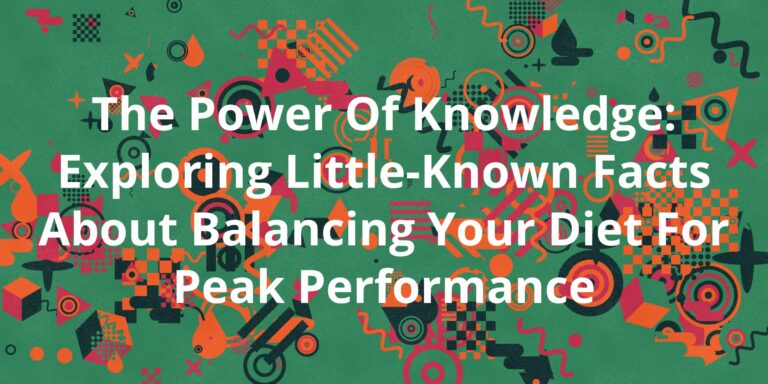Transform Your Life with Our Ultimate Beginner’s Guide to Balanced Nutrition
Introduction
Nutrition is the cornerstone of our health and well-being. It affects every aspect of our lives, from physical appearance to mental clarity and spiritual growth. However, with so much conflicting information about what constitutes a healthy diet, it can be difficult for beginners to navigate the world of nutrition and make informed choices about their health.
In this article, we will provide you with an ultimate beginner’s guide to balanced nutrition that is based on scientific evidence and practical advice. By following these simple steps, you can transform your life and achieve optimal health and well-being.
Step 1: Understand the Basic Nutrients
The first step towards balanced nutrition is understanding the basic nutrients that our bodies need to function properly. These include carbohydrates, proteins, fats, vitamins, minerals, and water.
Carbohydrates are the body’s primary source of energy and should make up around 45-65% of your daily calorie intake. Good sources of carbohydrates include whole grains, fruits, vegetables, and legumes.
Proteins are essential for building and repairing tissues in the body, as well as supporting immune function. Good sources of protein include lean meats, fish, eggs, dairy products, beans, and nuts.
Fats are necessary for overall health and should make up around 20-35% of your daily calorie intake. Good sources of healthy fats include avocados, nuts, seeds, and fatty fish.
Vitamins and minerals are essential for various bodily functions, including immune function, bone health, and energy production. Good sources of vitamins and minerals include fruits, vegetables, whole grains, lean meats, and dairy products.
Water is crucial for hydration and should make up around 60-80% of your daily calorie intake.
Step 2: Create a Balanced Meal Plan
Once you understand the basic nutrients that our bodies need, the next step is to create a balanced meal plan that includes all of these nutrients in appropriate amounts. Aim for a variety of foods from each food group to ensure that you are getting all of the necessary nutrients.
For example, a balanced meal might include:
* Whole grain bread or brown rice with lentils or chicken
* Steamed broccoli or roasted sweet potatoes
* A slice of avocado or a small handful of nuts
* A glass of milk or a piece of cheese
* Fresh fruit for dessert
Step 3: Avoid Processed Foods and Added Sugar
Processed foods and added sugar are two of the biggest contributors to poor nutrition and health problems. These foods are often high in calories, unhealthy fats, and sugars, which can lead to weight gain, inflammation, and other health issues.
To maintain a balanced diet, it’s important to limit your intake of processed foods and added sugar. Instead, focus on whole, nutrient-dense foods that are minimally processed.
Step 4: Listen to Your Body
Finally, the key to achieving optimal health through nutrition is to listen to your body and make adjustments as needed. Pay attention to how certain foods make you feel, both physically and mentally, and adjust your diet accordingly.
If you find that you’re feeling sluggish or experiencing digestive issues after eating a particular food, it may be time to cut back or eliminate that food from your diet. On the other hand, if you find that you’re feeling energized and satisfied after eating a certain food, make sure to include more of that food in your meal plan.
Conclusion
In conclusion, achieving balanced nutrition is essential for optimal health and well-being. By understanding the basic nutrients, creating a balanced meal plan, avoiding processed foods and added sugar, and listening to your body, you can transform your life and achieve optimal health. Remember, it’s never too late to make changes and start living a healthier lifestyle today.



